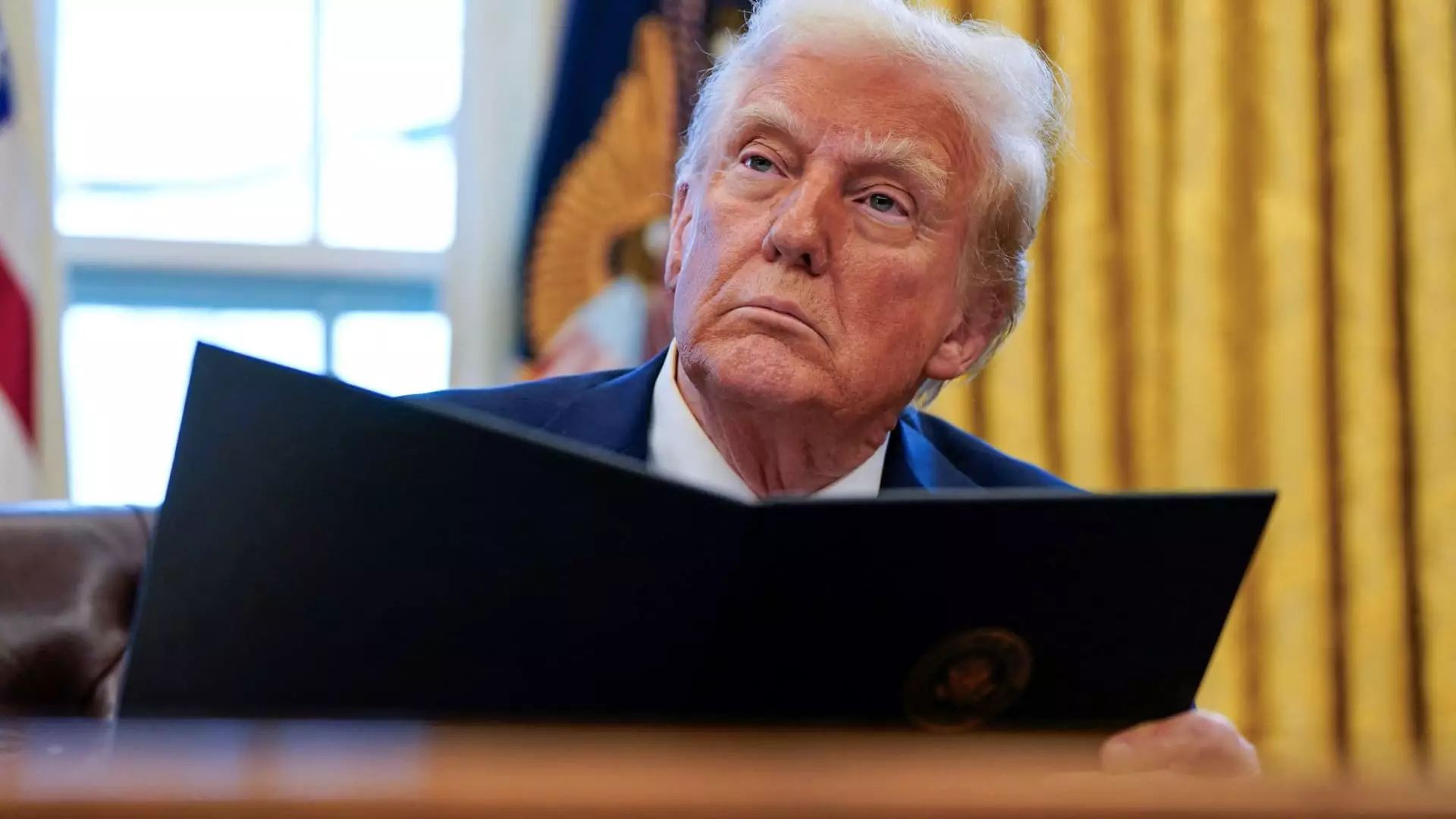In a significant escalation of trade tensions, the White House publicly confirmed that President Donald Trump plans to impose substantial tariffs on several key trading partners, aiming to exert influence on both foreign policy and domestic issues. This announcement, made by White House Press Secretary Karoline Leavitt, has sparked immediate reactions across financial markets and raised questions about its ramifications for the U.S. economy and its global trading relationships.
Trump’s administration will be implementing a 25% tariff on imports from Canada and Mexico, along with a 10% duty on Chinese goods. The stated reason for these aggressive measures is to combat the influx of illegal fentanyl, a synthetic opioid that has led to a public health crisis in the U.S. “This is part of our commitment to protect American lives from harmful substances entering our borders,” Leavitt remarked. However, the implementation of tariffs raises various concerns, both economically and politically.
The announcement led to an immediate decline in key stock indices. The Dow Jones Industrial Average fell over 300 points, reflecting investor anxiety over potential inflationary impacts and retaliatory measures from the affected countries. Analysts had previously pointed to an air of optimism in the markets, citing solid gains earlier in the day. The abrupt shift highlights how tariff moves can rapidly change market sentiment, instilling uncertainty among investors who strive to gauge the longer-term implications of such policies.
Despite the press secretary’s assurances that these tariffs are “promises made and promises kept,” the lack of clarity regarding exemptions and specific details on their implementation has left many in the business community perplexed. Reports suggesting possible exclusions were denied by the administration, signifying a commitment to enforce these tariffs broadly rather than selectively. As the nation conducts around $1.6 trillion in trade with Canada, Mexico, and China, the stakes are high, and the potential for catastrophic impacts on industries reliant on these trading partners cannot be overlooked.
Economists have voiced strong opinions on the possible implications that these tariffs may have on inflation, which is especially relevant given the recent readings from the Commerce Department indicating a 2.6% inflation rate in December. Although these figures hinted at a possible easing of price pressures, the fear remains that new tariffs could reignite inflationary trends at a time when the economy seems to be stabilizing.
Federal Reserve officials are keeping a watchful eye on the unfolding situations and their potential ramifications. Fed Governor Michelle Bowman emphasized the necessity of thorough understanding regarding the policies’ implementation, alongside a clearer outlook on economic responses. Meanwhile, Chicago Fed President Austan Goolsbee highlighted the importance of distinguishing between these tariffs being singular events versus the initiation of a cycle of retaliatory tariffs.
Interestingly, Trump’s use of tariffs extends beyond mere economic retaliation; they serve as tools for foreign policy leverage. The administration’s strategy appears designed to coerce nations into compliance regarding complex issues such as immigration and the drug trade. With prominent figures like trade advisor Peter Navarro connecting the current crisis to broader public health statistics, the administration is communicating that these measures are also a matter of national urgency.
As the announcement unfolds, it becomes apparent that tariff implementation is not just an economic issue; it involves deep political currents and moral imperatives. Whether this holds true in the minds of manufacturers, consumers, and international allies is open to scrutiny. Industry leaders will have to contemplate how these new economic realities will translate to their operating models and prices.
The U.S.’s decision to impose aggressive tariffs on Canada, Mexico, and China raises alarms on multiple fronts—ranging from stock market volatility to potential inflationary pressures and geopolitical complexities. As stakeholders prepare for what lies ahead, both in terms of compliance with international trade laws and the long-term consequences of these fiscal policies, clarity and communication from the administration will remain crucial. This pivotal moment in trade relations will test the resilience of economies and the ability to navigate a rapidly evolving global landscape.


Leave a Reply